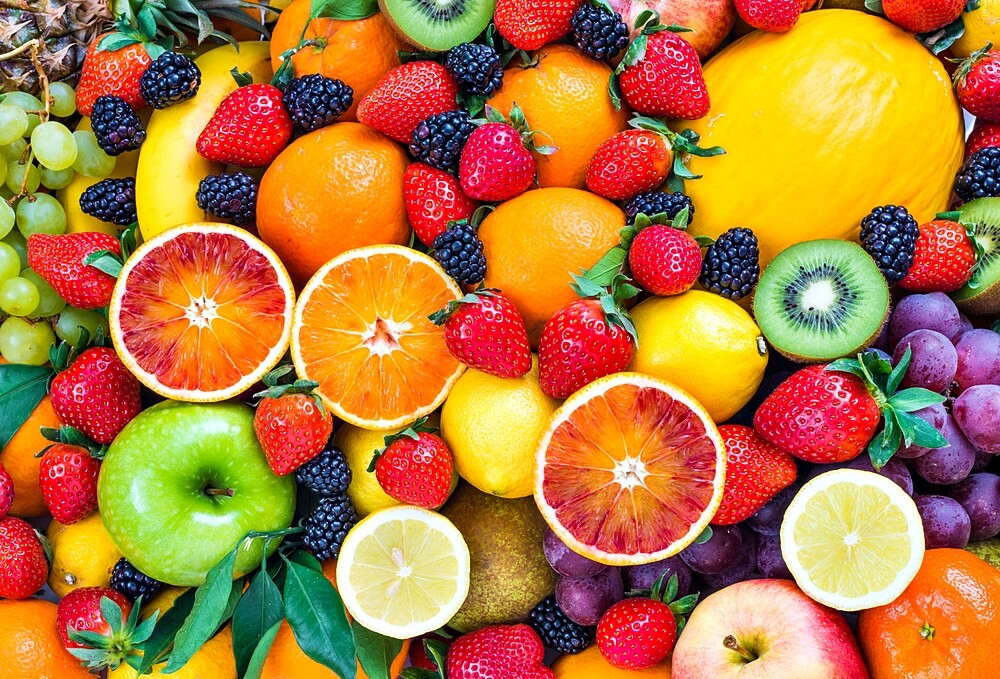Diagnosis fructose intolerance: What can I eat, you are surely asking yourself now. You can find out here which foods are taboo and what you can eat.
Fruit sugar (fructose) is found in fruit varieties, but also in vegetables. Fructose is also – besides glucose – a component of the disaccharide sucrose (also known as household sugar or simply sugar). Whoever is affected by a fruit sugar intolerance is probably rightly asking himself what else he can eat.
Fruit sugar intolerance – what happens in the body?
For fruit sugar to be absorbed by the body, a transporter is needed. Proteins in the small intestine transport, among other things, fructose into the blood. However, if this transport is disrupted, part of it is not absorbed from the small intestine and thus migrates undigested into the large intestine, which causes discomfort for the person concerned (see also the following section on symptoms). Colloquially this form is often called fructose intolerance, which is actually fructose malabsorption.
However, there is a hereditary form, hereditary fructose intolerance (HFI). This is when the body is unable to break down fructose due to a deficiency of a certain liver enzyme. This disease often manifests itself in infancy and can lead to severe liver and kidney damage if left untreated. Hereditary fructose intolerance is congenital and rather rare. Anyone who is affected by it must avoid fructose for the rest of their life.
A specialist, the gastroenterologist, can perform a breath test and diagnose an intolerance.
Symptoms
The intolerance is accompanied by some complaints, the following symptoms may occur:
- Flatulence
- Diarrhoea
- Abdominal pain
- Burping
- Feeling of fullness
- Nausea
What can I eat?
Every person can tolerate a certain amount of fructose. In case of intolerance, it is important to find out which amount of fructose does not cause problems and to adjust the diet accordingly. There is no generally valid list of permitted and prohibited foods. Every person affected should test what is tolerated and what is not!
Cheap foods that are considered to be well tolerated:
Fruit
- Banana
- Peaches
- Pineapple
- Tangerines
- Strawberries
- Raspberries
- Papaya
- Red currants
- Lemon
Vegetables
- Avocado
- Carrots
- Tomatoes
- Rhubarb
- Spinach
- Swiss chard
- Pumpkin
- Courgette
- Fennel
- Celery
Food without or with hardly any fructose
- Cereal products such as noodles
- Pure animal products without additives like meat, fish, eggs and milk
- Potatoes, noodles and rice
- Coffee
- Tea
- Nuts and seeds
- Green herbs
Miscellaneous
- Glucose
- Lactose (milk sugar)
- Vinegar essence
Rather unfavourable food with fruit sugar intolerance:
- Apple
- Pear
- Blueberry
- Plum
- Grapes
- Dried fruit
- Invert sugar, honey
- Beer and wine
- Yoghurt with fruits
- Fruit juices and wellness drinks
- Compote and jam
- Cider vinegar
- Whole grain products and cabbage and cabbage vegetables because of their high fibre content
Sugar substitutes are often sugar alcohols, some of which are obtained from fruit and vegetables and can be problematic, such as xylitol (E 967, also birch sugar). It is sometimes contained in sugar-free foods such as chewing gum. Some tolerate it, others have problems with it. Sorbitol (E420, 432-436) on the other hand blocks the absorption of fructose and should be avoided. It is found mainly in pome and stone fruit, but also in some vegetables, diabetic products, sometimes in light drinks.
Caution is also advised with finished products, these may also contain sugar substitutes!

